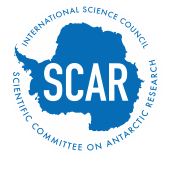|
Name ID: 109657
Place ID: 7756
in Ronne Ice Shelf, E of Fletcher Promontory, rising to c. 300m and extending NE-SW for c. 170km., was roughly mapped by a US traverse party from "Ellsworth Station", 1957-58, and named Korff Island after Serge Alexander Korff (b. 1906), American physicist and cosmic ray specialist, of Finnish birth; Professor of Physics, New York University, 1946-72 (Aughenbaugh and others, 1958, map E. 1; Neuberg and others, 1959, map p.111 and p.115). Ostrov Korf (Soviet Union. MMF chart, 1961). Vozvyshennost' Korf (Soviet Union. AA, 1966, Pl.24). The feature was further mapped on a radio echo-sounding flight by BAS from "Siple Station", Ellsworth Land, in January 1975 and shown to be an ice rise. Korff Ice Rise (APC, 1977, p.19; Swithinbank, 1977, map p.168 and photograph facing p.172; BAS sheet Misc. 2, 1981). Isla Portillo, so called by AAE after Almte Portillo, of the Argentine Navy (Argentina. MD, 1978, letter P).
|
|
Name ID: 127559
Place ID: 7756
An ice rise, 80 mi long and 20 mi wide, lying 50 mi ENE of Skytrain Ice Rise in the SW part of Ronne Ice Shelf. Discovered by the US-IGY Ellsworth Traverse Party, 1957-58. Named by the party for Prof. Serge A. Korff, vice chairman of the cosmic ray technical panel, U.S. National Committee for the IGY, 1957-59.
|

